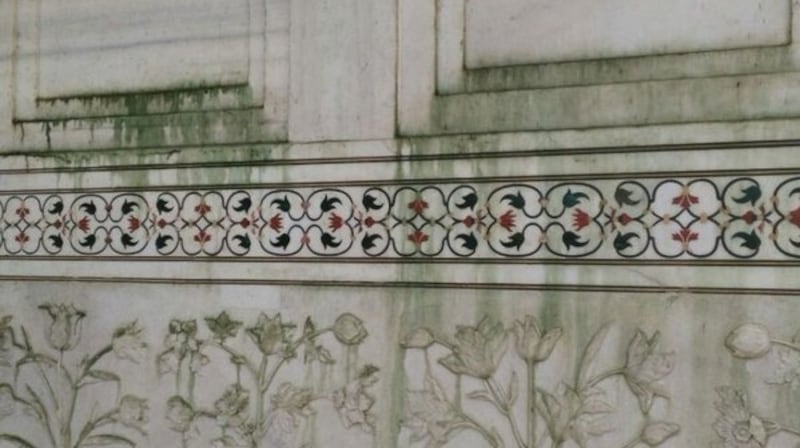It has been lit up in green for St Patrick's Day but now the Taj Mahal is turning 40 shades for a very different reason.
Millions of mosquito-like insects, their numbers supercharged by nutritious algae blooming along the banks of the nearby polluted Yamuna river, have swarmed the Taj Mahal on a mating flight, excreting a green substance on parts of its marble walls.
The green secretions on the back wall of the Taj Mahal in Agra, is a residue of the chlorophyll the insects consume.


They are not themselves harmful to the monument beyond the discolouration, said Girish Maheshwari, the head of the department of entomology at St John's College in Agra, who analysed the problem for the Archaeological Survey of India.
However, the explosive numbers of the insects, called Goeldichironomus, are an alarming indication of how polluted the Yamuna river has become, he said, since their eggs thrive on phosphorus and sediment in the water.
And he worried over the “highly synchronised” swarm of insects that descend on the monument in the evening.
“They can create problems for the visitors,” he said.
The walls have been cleaned with clay packs, said Manoj Bhatnagar, an official in the Agra office of the archaeological survey.
The excretions could also be removed with water, but the day-to-day cleaning is “very challenging,” Mr Bhatnagar said.
The insects do not seem to have deterred tourists, as yet.
Samir Uberoi, who runs a tour company based in Mumbai, visited the Taj Mahal with groups twice in the last two weeks and did not notice a change. When asked what would happen if there was a significant recurring greening on the most loved monument in the country, he said, "I'm only hoping to God they find a solution before that."
Puneet Dan, a tour guide in Agra, said he noticed the discolouration on the boundary wall of the Taj Mahal and on the back of the monument. So did his tourists, who he said flew into “semi-panic mode.”
He said all he could do was assure them that officials were not about to let one of the greatest monuments in the world turn green.
New York Times








